Chris Howe charts the progress of HS2 work to the north of Birmingham.
With the cancellation of HS2 Phase 2a to Crewe and Manchester, the junction that was to be constructed to the south of Handsacre village was seen as vital in order for HS2 to benefit the North.
Chris Howe charts the progress of HS2 work to the north of Birmingham.
With the cancellation of HS2 Phase 2a to Crewe and Manchester, the junction that was to be constructed to the south of Handsacre village was seen as vital in order for HS2 to benefit the North.
However, many within the rail industry raised serious doubts about the ability of the section of the WCML between Handsacre and Colwich to handle any additional services without impacting reliability and provision for freight.
There have therefore been repeated calls since October 2024 for the government to reverse the decision to cancel Phase 2a to Crewe.
Most recently, in March the High Speed Rail Group (HSRG) urged the government to build HS2 to Crewe. Within its HS2 Realism report which it submitted to HM Treasury, HSRG set out in detail the justification of building to Crewe, instead of ending the line at Handsacre.
HSRG Chair Dyan Perry said: “HS2 is at a crossroads. If delivered correctly, it will unlock national transport capacity, generate a multi-billion-pound return to the Treasury, drive economic growth across the UK, and enhance regional connectivity.
“However, if cut short, the government risks wasting substantial investments to date, short-changing the national account, and squandering HS2’s far-reaching socio-economic benefits.”
However, the Labour government so far seems unwilling to consider any further extension of HS2 until the costs for Phase 1 are brought under control.
Currently, the bridge that will allow HS2 to run underneath the A38 to the east of Lichfield is the most northerly structure on the under-construction high-speed line.
All work north of this point to Handsacre stopped in March 2023, after the government announced that work at Euston station and north of Birmingham would be paused for two years.
A number of key structures between Coleshill (to the east of Birmingham) and Lichfield have been delivered since then. But work north of Birmingham has perhaps not been as intensive as on the central section between the West Midlands and Old Oak Common.
Rykneld Street Bridge, which will carry the A38 carriageway over HS2, is just one of a series of structures that are being built within a mile of each other.
The first significant structure, located 1.2km (0.7 miles) to the south of the A38, was moved into place in July 2023. This involved moving a 6,200-tonne pre-built bridge into position using self-propelled modular transporters (SPMTs). The bridge was manoeuvred into place via a gap that was opened up in the West Coast Main Line.
The entire operation - including excavating the gap, moving the bridge, and relaying the WCML tracks - was completed within a single nine-day blockade.
A smaller 2,600-tonne bridge deck was also moved into position in July 2023, immediately to the east of the A38 site. This will take the HS2 tracks underneath the South Staffordshire line.
This line, which is used primarily by freight services, closed for a longer period between June and August 2023. During this closure, the existing tracks were removed before piles were installed to support the bridge deck. The deck was then moved into place, after which the ballast and track were reinstated.
The bridge deck for the South Staffordshire line rests on part of a structure which will eventually be 420 metres long, and which will take HS2 trains under the existing railway. An adjacent bridge span has been constructed for the southbound exit slip from the A38. The main A38 carriageway will rest on a third span which is currently under construction.
To support the three spans, the Balfour Beatty Vinci joint venture (BBV JV) responsible for building the West Midlands section of HS2 is first having to install 1,014 secant piles - each 30 metres deep. The Staffordshire line and southbound exit slip spans are already resting rows of secant piles that will eventually form part of the walls for the retaining structure.
Secant pile walls are constructed using interlocking piles, which alternate between reinforced and non-reinforced.
The non-reinforced piles, which are spaced a set distance apart, are installed first. A piling rig then bores in between and partially through pairs of non-reinforced piles. A rebar cage is then lowered into the pile bore before it is filled with concrete. Each completed row then forms a strong and watertight retaining wall section.
Piling work for the main carriageway began in October 2024, after the carriageway was realigned to the west.
It was completed in February, since when work has focused on building the capping beam which sits on top of the piles, and constructing the bridge deck for the main carriageway. The bridge slab will be poured in situ on top of the retaining structure.
Once the bridge deck section is complete, the A38 will be realigned east to its previous position, resting on the bridge deck. The realignment of the main carriageway is scheduled to be completed by March 2026.
Further secant pile sections will then be installed, to tie a pre-built wall section (already constructed to the west) to the main carriageway section. This work will require closure of the northbound entry slip from November 2025 until September 2026.
Once the 420-metre retaining structure has been constructed, the earth from between the walls will be excavated, involving the removal of 750,000 cubic metres of material. This earth will be re-used locally to form embankments on other parts of the HS2 route.
Before the announcement that work north of Birmingham would be “paused”, preparations to build the Fulfen Wood (WCML) bridge structure and retaining structure had been at an advanced stage. It would therefore have been difficult to stop work on this section.
Additionally, constructing the WCML bridge, retaining structure and associated bridge spans is a complicated undertaking which requires a great deal of pre-planning, in order to reduce disruption to the existing railways and to a key trunk road.
It was therefore vital that the work was carried out on schedule and that key completion targets were met. This is despite the uncertainty that has surrounded the project since the pause on the northern section, and subsequent re-scoping of the project by the previous Conservative government in October 2023.
Beyond Rykneld Street Bridge, work was at a significantly less advanced stage, and so was brought to a safe stop after the announcement in March 2023. Since then, no work has taken place, and the sites north of the A38 were largely mothballed.
These site locations had been gearing up for the construction of two grade-separated junctions. One would have taken HS2 north (Curborough Flyover), with a spur heading west to the WCML. A further junction would then have connected the spur to the WCML just to the south of Handsacre.
At the time of writing, this ‘two-year pause’ was due to lapse. But despite this, there had been no announcement about the northern section - or even suggestion as to if (or when) work on Handsacre Junction will re-commence.
Despite the pause, BBV JV has carried out some work north of the A38, but this is not directly related to the structures that will have to be constructed.
Instead, the work is related to a housing development and involves relocating the road junction between Wood End Lane and Netherstowe Lane. Utility diversion works also took place, but were concluded in the spring.
If Curborough Flyover is constructed, then the spur to the WCML would cross Woodend Lane and Netherstowe Lane, so it’s likely that further work will have to be carried out on the roads in this location.
Removing Curborough Flyover would require a redesign which would differ significantly from the plans deposited as part of the Hybrid Bill process.
Therefore, any significant changes could further delay construction of the connection to the WCML beyond the two years which have already passed.
Although the design of the WCML spur was refined to pass the Trent and Mersey Canal to the south, rather than over the canal on a viaduct, the spur will still have to cross the A515.
In addition, the Phase 2a stub would have to cross Woodend Lane and the Trent and Mersey Canal. As such, there are still a number of significant structures which will need to be built if HS2 is to benefit the North.
It is therefore imperative that work recommences north of Lichfield at the earliest possible opportunity.
Login to continue reading
Or register with RAIL to keep up-to-date with the latest news, insight and opinion.



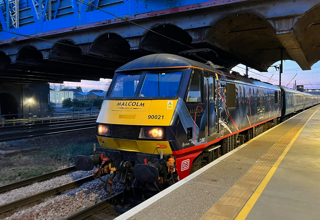
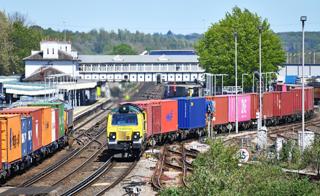
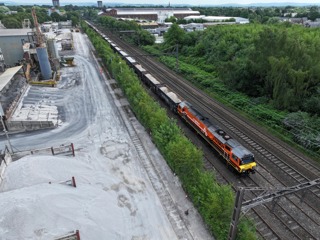
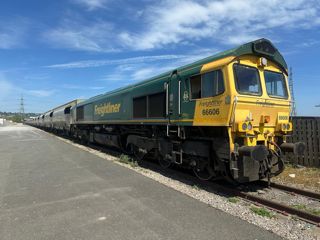
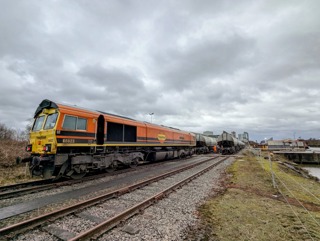










Login to comment
Comments
No comments have been made yet.